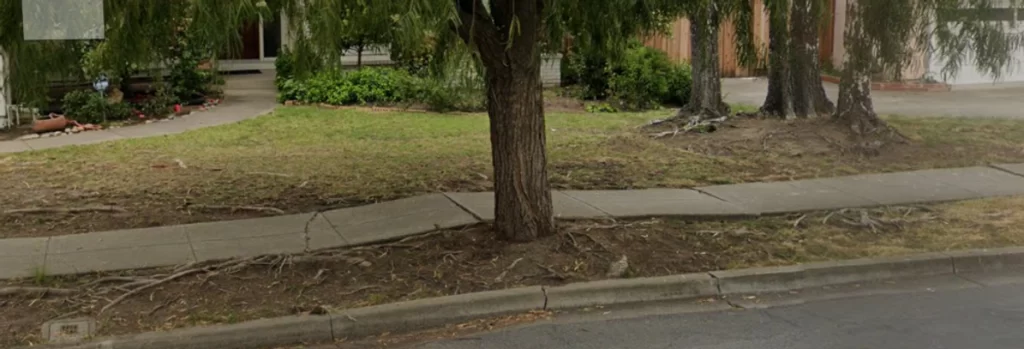One of the major causes of tree failure is root damage. When a tree’s root system has been extensively damaged, the whole tree can fall to the ground – or onto your house.
“Most homeowners will look at a tree’s branches, and if there is no visible problem, they will determine that the tree is healthy. Many problems in trees do show themselves in the canopy – leaf discoloration, pre-mature leaf shedding or even branch death,” notes Tchukki Andersen, BCMA, CTSP* and staff arborist with the Tree Care Industry Association. “But, a significant amount of information on tree health and structural integrity lies unseen below ground.”
Trees may fall over when their roots can no longer anchor their weight. In the urban and suburban landscape, roots can be lost or damaged by construction activities such as excavation, trenching, adding excess fill, paving or additional stresses such as fungal decay, drought or flooding.
“Some of the indicators of root problems can be detected by homeowners, while others can only be diagnosed by a professional arborist using specialized examination methods,” says Andersen.
Signs and symptoms that could indicate root problems include decline in the tree canopy, usually starting at the top but occasionally affecting one side or major branches throughout the canopy. A tree with an increasing lean, especially with soil heaving around its base, is another sure symptom of root problems. Signs of root problems include dead roots, broken roots and presence of fungal fruiting bodies (mushrooms) at the base of the tree or radiating out from the base.
Roots sustain the live branches and leaves above the ground. When the connection between roots and the above-ground part of the tree is disrupted by root decay or loss, leaf cover will thin and branches will begin to die as the tree’s energy reserves dwindle.
On the way down … causes of root damage
Sometimes root damage is visibly obvious when utility trenches, repaving, grading or soil compaction occurs in the tree’s root zone. But more often it can be difficult to assess damage to the root system. To determine how the root damage might affect the health of the tree, a professional arborist can estimate how much of the rooting area was affected within the critical root zone (CRZ). The CRZ is a circular area around the stem of the tree, usually smaller than the area defined by the outer reaches of the tree’s branches, known as the drip line. If any of the main roots inside the CRZ are damaged or missing, the risk of tree failure is greatly increased.
Think of the tree as both a structure and a living organism. As a rule of thumb, up to 40 percent of the root system can be damaged – causing problems for the living organism – before the tree’s structure is seriously impaired. Conversely, the tree can be biologically healthy while the main roots it counts on for support are deteriorated.
What can you do?
Be on the lookout for the signs and symptoms of root damage. These symptoms can be subtle, even undetectable to the untrained eye. If you believe that your tree’s roots are diseased or are causing damage to your property, call ArborTech for a free estimate appointment where we will assess the roots and provide the best possible solution
Call ArborTech Tree Care (510)881-8733 to set up your FREE estimate appointment





